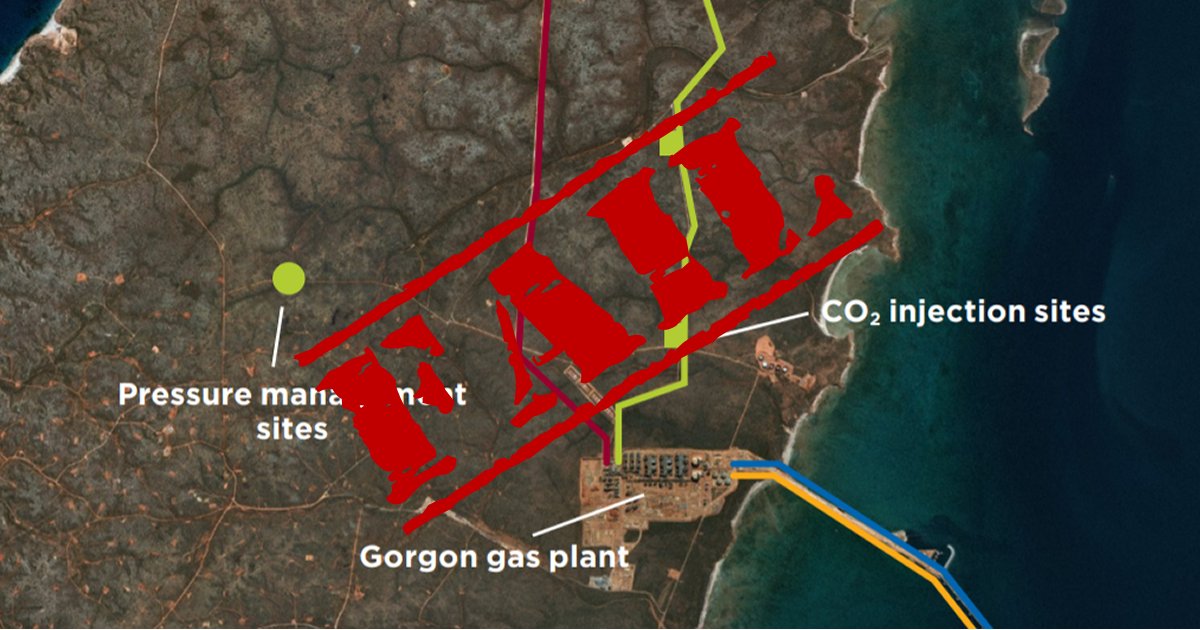
Chevron Australia’s Gorgon carbon capture and storage (CCS) project wasn’t – and probably still isn’t – living up to expectations.
Last Monday, the Morrison government announced it will provide the Clean Energy Finance Corporation with $500 million as part of a new billion-dollar fund to help commercialise low emissions technology, including carbon capture and storage (CCS).
On Thursday, another reminder was provided of why CCS is a risky bet.
Chevron Australia announced an AUD$40 million investment in Western Australian “lower carbon projects”, which is part of the company making good on a failure to meet CCS targets at its Gorgon gas facility over a five-year period ending in July this year.
The project was expected to capture and sequester around 4m tonnes a year to meet the targets, but had only managed to inject five million tonnes of carbon dioxide equivalent from August 2019 (when it finally started operating) to July this year.
Gorgon CCS Still Failing To Meet Expectations?
In announcing the offset investment, Chevron Australia managing director Mark Hatfield said:
“Since starting up in August 2019, the Gorgon carbon capture and storage system has safely injected approximately 5.5 million tonnes of greenhouse gas emissions and is demonstrating the importance of CCS technology in advancing a lower carbon future.”
It would seem another half million tonnes have been added to the tally since July. While it’s not clear how current that figure is, if it’s until the end of last month then the Gorgon CCS project still isn’t living up to the expected 4 million tonnes a year.
Last Wednesday, Minister for Industry, Energy and Emissions Reduction Angus Taylor claimed CCS is “working in large quantities now”, with dozens of projects operating around the world. But there are a bunch of devils in that detail. And while those projects may have a claimed capacity of 111 million tonnes a year – a tiny drop in a very large emissions bucket – whether they are collectively consistently performing to that level is an entirely different matter.
CCS A Band-Aid Over A Gangrenous Wound
Humanity has been really good (bad?) at sweeping its dirt under a multitude of rugs; which is essentially what CCS is. This approach invariably comes back to bite us. We really need to change our mindset and fully embrace renewables such as wind and solar power instead of finding excuses to extend dependence on fossil fuels; the emissions from which are just one of their many problems.
If even an inch is given to fossil fuels, its supporters will attempt to turn it into a mile. An example of this was the disappointing result at COP26 where members failed to agree on a call to “phase-out” coal use, instead settling on “phase down” in the Glasgow Climate Pact:
“36. Calls upon Parties to accelerate the development, deployment and dissemination of technologies, and the adoption of policies, to transition towards low-emission energy systems, including by rapidly scaling up the deployment of clean power generation and energy efficiency measures, including accelerating efforts towards the phase-down of unabated coal power and inefficient fossil fuel subsidies, recognizing the need for support towards a just transition.”
Still plenty of wiggle room there, and one word can matter – it certainly did for Senator Matt Canavan, who said:
“The Glasgow agreement is a green light for Australia to mine more coal.”
Just yesterday, Prime Minister Scott Morrison and Deputy Prime Minister Barnaby Joyce were also busy spruiking the future of the coal industry.
And as Australia is a Typhoid Mary of emissions, that should really bother us all.

 RSS - Posts
RSS - Posts



“Humanity has been really good (bad?) at sweeping its dirt under a multitude of rugs; which is essentially what CCS is. This approach invariably comes back to bite us. We really need to change our mindset…”
Yep, we really need to change real quick or reap the existential consequences.
On Nov 8, Ian Dunlop made a presentation titled Climate Change Reality at a Voices of Bradfield online session. Ian’s presentation explored the answers to:
• What is the climate reality today?
• What has been the policy response?
• What is really required?
The YouTube video titled 8 Nov 21 Bradfield in Conversation with Ian Dunlop and Freddy Sharpe: Never Waste a Good Crisis includes Ian Dunlop’s presentation from time interval 0:17:19 through to 0:34:20 at:
My question is how can we quantify and verify that amount of CO2 has been successfully sequestered? Sounds dodgy to me at any rate……..
And what happens if any of it does escape as we still don’t know how successful CCS can contain the CO2 permanently in the ground.
Lots of ifs and buts around something we can’t even verify.
Unlike solar panels, we know that it can generate power, for free, that offsets other forms of generation mostly FF based ones thus reducing CO2 emissions or providing more power into the grid without increasing CO2 emissions.